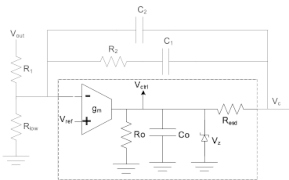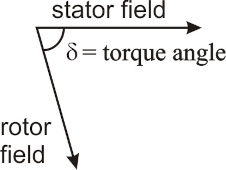 |
|
IN THIS ISSUE:
» Operational Transconductance Amplifiers In PWM ICs: Grounded And Negative Feedback Compensation Both Have Their Place
» Motor Control For Designers (Part 2): Electromagnetic Force Production In Motors
» Focus On Magnetics:
Better Core Geometry Is Why Planar Magnetics Win
» Industry Event: CS MANTECH
» Power Products
» Industry Events: Long Island Symposium
& PwrSoC 25
» New on How2Power.com
» Other Top Power News
From the Editor's Desk David G. Morrison
Editor, HOW2POWER TODAY

If you’re a GaN device supplier, is it still fabulous to be fabless? Or are integrated device manufacturers (IDMs) gaining the upper hand? Will SiC MOSFETs become more price competitive through economies of scale to supplant their silicon competitors in mass-market applications such as EVs? Or will future versions of GaN HEMTs replace them with better performance and lower pricing? And will the specialist companies who pioneered these WBG technologies survive and thrive through the growing pains that come with increasing global competition, patent lawsuits, shifting markets, and trade wars? Over the decade-plus since SiC and GaN devices first came to market, the technologies and companies have progressed, yet many questions remain about this dynamic marketplace. Nevertheless, in the world of WBG semiconductor research, the beat goes on as investigators try to push GaN technology further, pursuing devices with higher breakdown voltages for both lateral HEMTs and the more-elusive vertical GaN MOSFETs. The search is on for better gate dielectrics and device structures, as well as better and cheaper substrates. But the work doesn’t stop there, as experts seek to leverage newer materials with even wider bandgaps than GaN. Materials such as gallium oxide and aluminum nitride are showing their promise as the basis for next-generation, high-voltage power devices. Some of the latest research on these topics was presented at the recent CS MANTECH conference, where developments in compound semiconductor components for a range of applications (not just power) were presented. You can read about the power device progress below in my report on this conference. Coincidentally, this issue also brings news of silicon MOSFETs that leverage a new spin on RESURF technology to compete with GaN power switches. Contemplate the future of all these advances in device design and fabrication as you hopefully enjoy this month’s features on OTA compensation networks, motor theory, and planar transformers along with the latest product and industry news.
|
|

|
HOW2POWER EXCLUSIVE DESIGN ARTICLES 
|
Operational Transconductance Amplifiers In PWM ICs: Grounded And Negative Feedback Compensation Both Have Their Place
by Alain Laprade, Power Electronics Specialist, Saunderstown, R.I.
Operational transconductance amplifiers (OTAs) are commonly used with grounded-feedback compensation networks in PWM IC designs. However, an alternative configuration—connecting the compensation network via negative feedback to the output voltage divider—has shown promising results. Despite its potential, this approach remains underutilized, likely due to misconceptions about its viability. When I first experimented with this technique years ago as a field applications engineer, the prevailing belief was that OTA negative feedback wouldn’t work. This article aims to clarify that misunderstanding and explore the merits of both configurations. Using type-II feedback transfer function models, we’ll compare grounded and negative-feedback implementations to highlight their respective tradeoffs and performance characteristics. All theoretical expressions are validated through SIMPLIS simulations to ensure practical relevance. Read the article…
|

A type-II OTA with negative-feedback
configuration. This option offers some
flexibility in shaping mid-band gain. |

|

Current in the stator winding(s) produces
a stator field that interacts with the PM
rotor field. Motor-drive phase control aims
to keep the angle between these field
vectors, the torque angle, at 90°. |
Motor Control For Designers (Part 2): Electromagnetic Force Production In Motors
by Dennis Feucht, Innovatia Laboratories, Cayo, Belize
This part continues the discussion of motor theory by explaining how electromagnetic force is generated. It begins by introducing the Lorentz Force equation to explain the generation of mechanical force in electrostatic and magnetic motors. Next, we use the example of a simple two-pole motor to explain how the motor components cause magnetic fields to interact to produce force and motion. The relationship between rotor field and stator field-current vectors is used to explain phase and magnitude control as the basis for motion control including torque generation. The next section extends the explanation of motor construction, describing an outer-rotor permanent-magnet (PM) motor including pole-pairs, winding configurations, and various aspects of its operation. Finally, the roles of pole-pairs and phase windings in the implementation of phase control and the regulation of torque angle for field-oriented control are explained. Read the article…
|


FOCUS ON MAGNETICS 
Sponsored by Payton Planar Magnetics
A monthly column presenting information on power magnetics design, products, or related technology |
Better Core Geometry Is Why Planar Magnetics Win
by Gregory Mirsky, Design Engineer, Deer Park, Ill.
Sometimes it is said that planar magnetics perform better than wound magnetics. That’s a curious statement. What does it mean "to perform better"? Essentially, it is to have lower loss at the same volume, core material, operating power and frequency. The loss in transformers is defined by the value of the magnetizing current. Therefore, to understand how transformer geometry influences losses, we must determine how the core geometry affects the magnetizing current. As we will see, a lower core height leads to lower losses. For inductors, the magnetizing current is the operating current, and we cannot adjust it. Inductors are intended for storing magnetic energy, and the higher Score/lmag ratio allows for storing more energy at the same current as we will see.
Read the article…
|

 |
 |

 |

|

INDUSTRY EVENT
 |
|
CS MANTECH Peers Into The Future Of Power Semiconductors
by David G. Morrison, Editor, How2Power.com
Attending the most recent edition of the International Conference on Compound Semiconductor Manufacturing Technology (CS MANTECH, held May 19-22 at the Hilton New Orleans Riverside) introduced me to advances in the design and fabrication of power devices based on next-generation materials such as aluminum nitride and gallium oxide. Such materials have even larger bandgaps than SiC and GaN. It was also a forum for learning about the latest advances in the design and fabrication of GaN power semiconductors, including research on higher-voltage vertical devices and lateral HEMTs. Such developments were presented in two power device sessions which are the subject of this article. Read the full story…
|


POWER PRODUCTS  |

INDUSTRY EVENTS
 |
|
Long Island Symposium: Plug Into The Future Of Power Electronics
Get ready for a charged-up day of innovation, networking, and cutting-edge tech. On Thursday, November 6, the IEEE Long Island Power Electronics Symposium & Exhibits returns with its 7th annual edition, bringing together the brightest minds and boldest ideas in the power electronics industry. Whether you're an engineer, manager, designer, or procurement pro, if your work touches power supplies, converters, power management, energy storage, or servos, this event is made for you. Professionals across military, industrial, medical, space, consumer, and automotive sectors will be there. Read the full story…
|
|
PwrSoC 25: The Forum For Advances In Miniaturized And Integrated Power Conversion And Power Management Technologies
Registration is now open for the Ninth International Workshop on Power Supply on Chip (PwrSoC), which will be held September 24-26, 2025 at Seoul National University in Seoul, Korea. PwrSoC is described as the world’s leading forum dedicated to the advancement of miniaturized and integrated power conversion and power management technologies. This article highlights the talks that will be presented at this year’s workshop. Read the full story…
|

NEW ON HOW2POWER.COM
 |
|
Calendar of Events — Over 450 Listings For 2025
HOW2POWER’s Events Calendar lists selected conferences, tradeshows, workshops and webinars related directly or indirectly to power electronics. Our calendar currently lists over 450 of the electronics industry’s top events for 2025.
Visit this section …
|


OTHER TOP POWER NEWS
|
|
 The District Court Munich has ruled in favor of Infineon Technologies in a patent infringement case concerning GaN technology between Infineon and Innoscience. The District Court Munich has ruled in favor of Infineon Technologies in a patent infringement case concerning GaN technology between Infineon and Innoscience.
 The Beijing IP Court has denied the appeal filed by Innoscience, thereby reaffirming the validity of EPC’s Chinese Patent No. ZL201080015425.X. The Beijing IP Court has denied the appeal filed by Innoscience, thereby reaffirming the validity of EPC’s Chinese Patent No. ZL201080015425.X.
 A call for papers has been issued for PCIM 2026, which will be held next June 9-11 in Nuremberg. A call for papers has been issued for PCIM 2026, which will be held next June 9-11 in Nuremberg.

|



 Sager Electronics, a North American distributor, and Advanced Energy have announced the addition of HiTek, Trek, and Monroe brands to the Sager portfolio. Sager Electronics, a North American distributor, and Advanced Energy have announced the addition of HiTek, Trek, and Monroe brands to the Sager portfolio.
 Richardson Electronics is partnering with Pakal Technologies to supply customers with Pakal’s advanced 650-V and 1200-V silicon-based power switches. Richardson Electronics is partnering with Pakal Technologies to supply customers with Pakal’s advanced 650-V and 1200-V silicon-based power switches.
 Infineon Technologies is on track with its scalable GaN manufacturing on 300-mm wafers, expecting first samples for customers in Q4 2025. Infineon Technologies is on track with its scalable GaN manufacturing on 300-mm wafers, expecting first samples for customers in Q4 2025.




 By partnering with Richardson Electronics, iDEAL Semiconductor will gain access to Richardson Electronics’ design teams and sales specialists. By partnering with Richardson Electronics, iDEAL Semiconductor will gain access to Richardson Electronics’ design teams and sales specialists.
 AEM has launched a single-source, streamlined website uniting all its brands, among which are circuit protection and discrete semiconductor products. AEM has launched a single-source, streamlined website uniting all its brands, among which are circuit protection and discrete semiconductor products.




 Through a partnership agreement, Microchip and Delta Electronics will collaborate to use Microchip’s mSiC products and technology in Delta’s designs. Through a partnership agreement, Microchip and Delta Electronics will collaborate to use Microchip’s mSiC products and technology in Delta’s designs.
 A new design win leverages onsemi’s EliteSiC MOSFETs to power Schaeffler’s traction inverter for a global automaker’s plug-in hybrid electric vehicle platform. A new design win leverages onsemi’s EliteSiC MOSFETs to power Schaeffler’s traction inverter for a global automaker’s plug-in hybrid electric vehicle platform.

ABOUT THIS NEWSLETTER: Thank you for reading HOW2POWER TODAY.
How2Power sends no more than one e-mail per month to registered users. Continuing your subscription ensures you'll receive future newsletters. Manage Your Subscription
©2020 All rights reserved. www.how2power.com
|
|